COCCINEA (Cavanilles) DC, 1828 (engl./ fr.)
First Description by Cavanilles in Icones et Descriptiones Plantarum 2: 54. 1793.
Synonyms :
Cotyledon coccinea Cavanilles (1793)
Echeveria pubescens Schlechtendal (1839) / Cotyledon pubescens (Schlechtendal ) Baker (1869)
Echeveria longifolia hort.
Series Echeveria
Type : Not designated.
Lectotype - Iconotype : Cavanilles, Icones et Descriptiones Plantarum 2, plate 170. 1793.
Etymology : Latin "coccineus" = deep red : referring to the red flowers.
Distribution : Mexico (Hidalgo, Distrito Federal, Guanajuato, Puebla, Oaxaca, Tlaxcala, Chiapas, Veracruz, Querétaro).
Description by Reid Moran in Cactus and Succulent Jorunal US 48: 227-228. 1976 :
Plant gray velvety pubescent on all exposed parts, with tapering pluricellular trichomes to 2.5 mm long.
Stems to 70 cm high or trailing to 1 m or more, 0.5 - 2 cm thick, glabrescent, becoming silvery gray, usually little branched but sometimes shrubby.
Rosettes 5 - 20 cm wide, of 8 - 17 leaves crowded at stem apex, or the lower somewhat separated.
Rosette leaves elliptic to oblanceolate or cuneate-obovate, acute to acuminate, 3 - 13.5 cm long, 1 - 3.5 cm wide, 4 - 8 mm thick, channeled ventrally acutely so towards base, the margins rounded, the base subterete, 5 - 8 mm wide.
Floral stems arising just below stem apex but by late anthesis as much as 8 cm below, 20 - 70 (-100) cm high, 4 - 13 mm thick, with 25 - 60 leaves below inflorescence, the leaves ascending to downcurved, elliptic to oblanceolate, acute to acuminate, channeled ventrally, short-spurred, the lowest to 7 cm long, 2.5 cm wide, 4 mm thick.
Inflorescence spicate to subracemose, dense to rather open, of 15 - 60 (-110) flowers, the bracts lanceolate to oblanceolate, narrowly acute, commonly exceeding flowers, the pedicels 2 - 4 mm thick, 0 - 2 (-4) mm long, the paired bracteoles linear, 5 - 15 mm long.
Flowers July to March. Calyx disk 4 - 6 mm wide, the segments mostly spreading or slightly reflexed, nearly equal or those of one flower differing by as much as one-third, triangular-lanceolate, narrowly acute, 5 - 15 mm long, 2 - 5 mm wide, 1.5 - 3 mm thick, biconvex with obtuse margins.
Corolla scarlet to castilian red, orange-yellow within, 9 - 15 mm long, 7 - 10 mm wide at base, 8 - 11 mm wide above, pentagonal with flattish sides, petals connate 3 - 5 mm, narrowly ovate, acute to subacuminate, apiculate, 3 - 5 mm wide, slightly ascending from top of corolla tube and not in contact above middle of free part, acutely keeled, the well-defined nectar pit with conspicuously thickened upper rim, filaments yellow, subulate, 5 - 8 mm long from corolla base, 0.7 - 1 mm wide at base, anthers yellow. .........
Cytology : n = 23, 25.
Link to short descriptions in English and French.
Note :
1. Echeveria coccinea was the first Echeveria to arrive in Europe, at around 1790. Seeds were sent to the Botanical Garden of Madrid, origin unknown, and in 1793 the Spanish botanist Cavanilles described and illustrated it as Cotyledon coccinea. Later it was found native in Mexico.
2. When in 1828 De Candolle erected the genus Echeveria for the New World Cotyledon species, E. coccinea became the type species of the new genus Echeveria.
3. In 1839 Schlechtendal described E. pubescens - obviously because he ignored the 1793 description of E. coccinea by Cavanilles. E. pubescens is not a species distinctly different from E. coccinea, it is only one of the variants of the very variable E. coccinea. Therefore the name E. pubescens is merely a synonym of E. coccinea and should not be used any longer. Walther (Echeveria, p. 390) incorrectly treated E. pubescens as a species distinctly different from E. coccinea because what he considered to be E. pubescens in fact was the hybrid E. ‘Pulvicox’ !
4. Plants circulating as E. pubescens are almost always the hybrid E. 'Pulvicox' and not the species E. coccinea.
5. E. coccinea is easily recognizable by the long bract subtending each flower and conspicuously exceeding the corolla, E. 'Pulvicox', the imposter, is devoid of such bracts.
E. coccinea in habitat in Mexico :
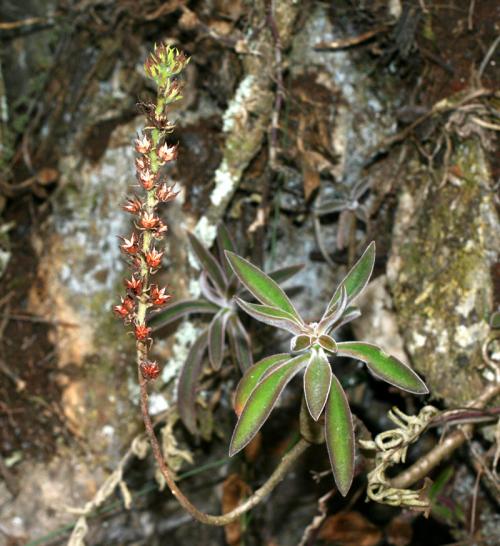
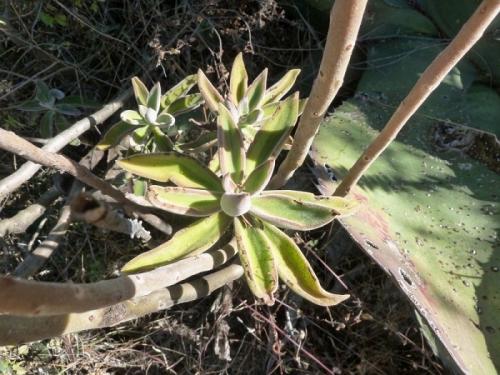
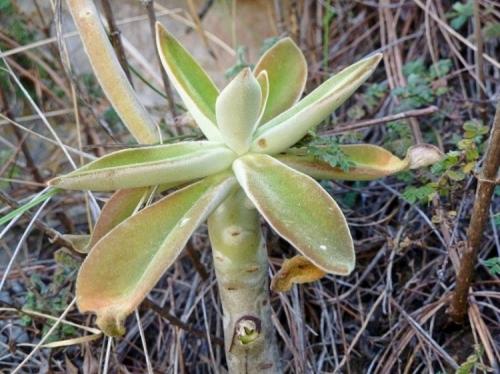
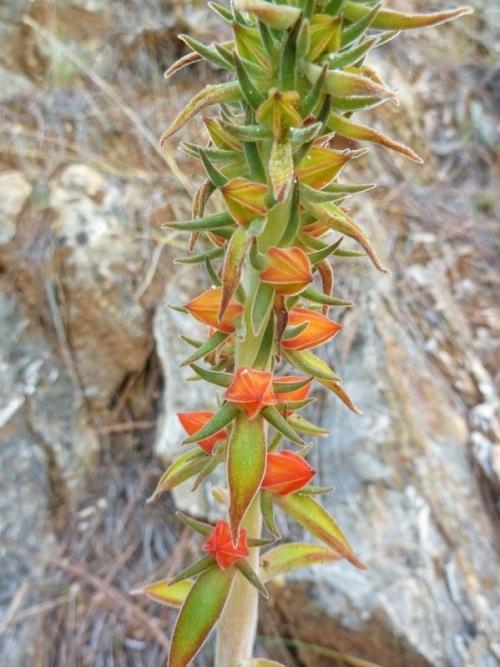
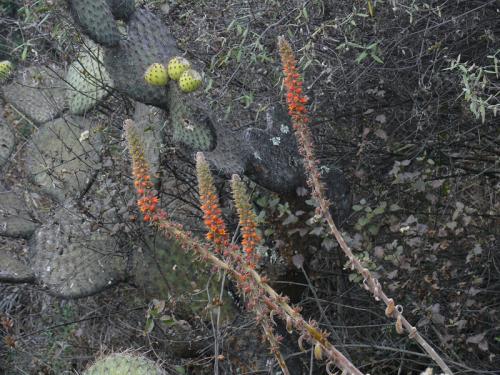
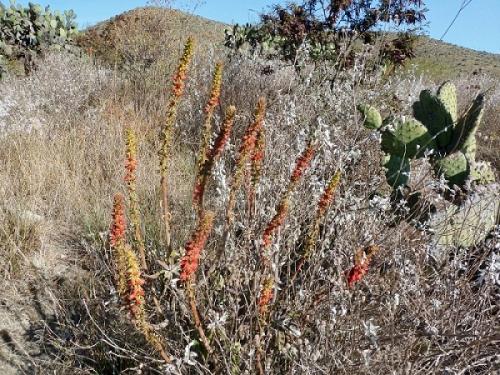
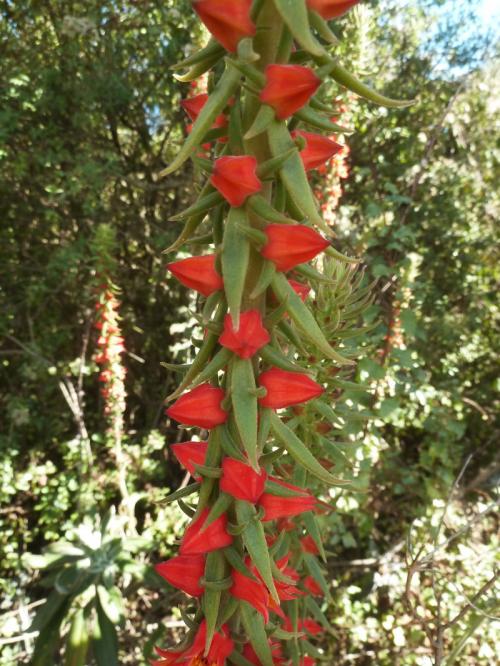
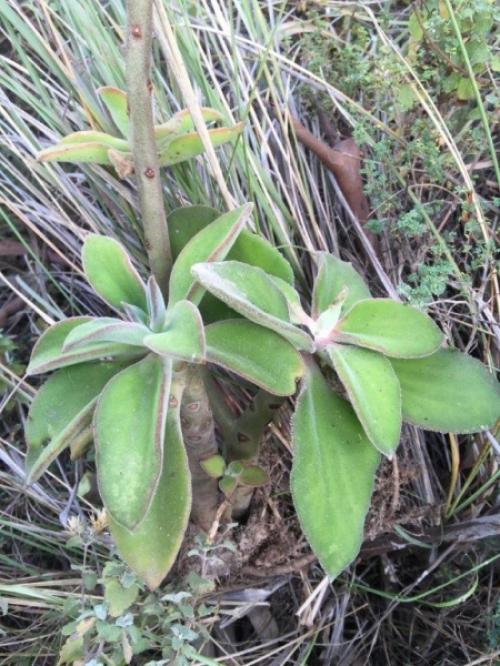
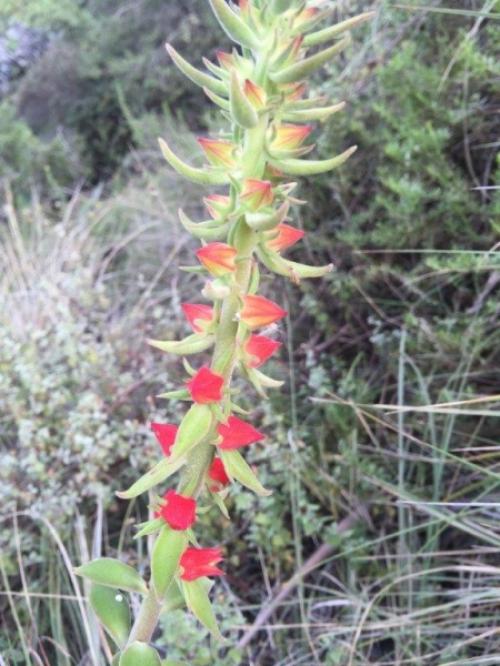
Photos Gerhard Köhres
Laguna de Aljojuca, Puebla, Mexico :
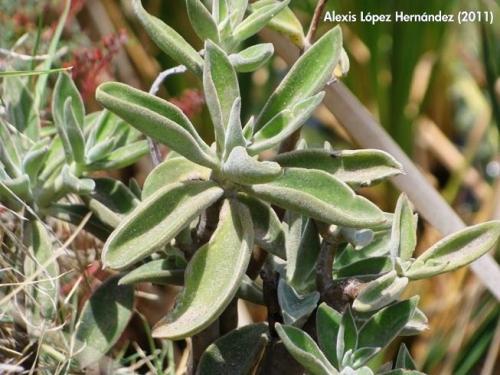
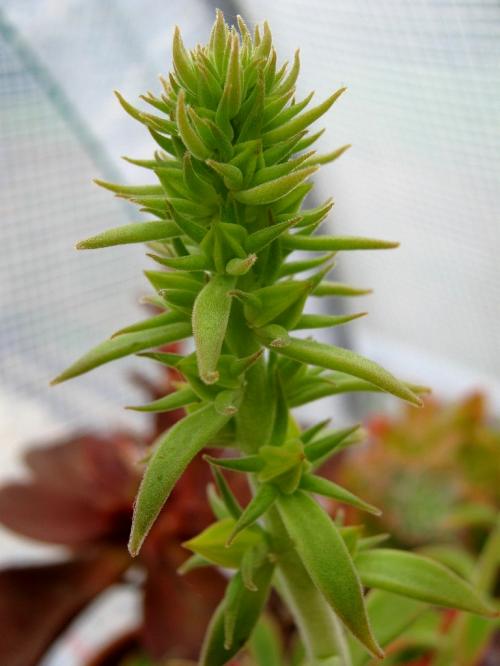
Photo Emmanuelle Aubé
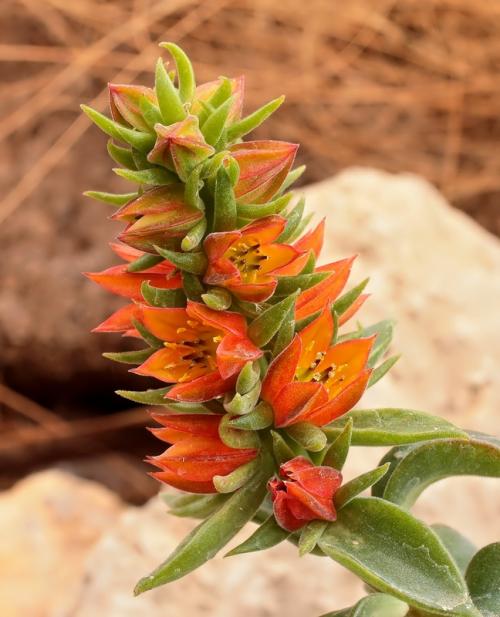
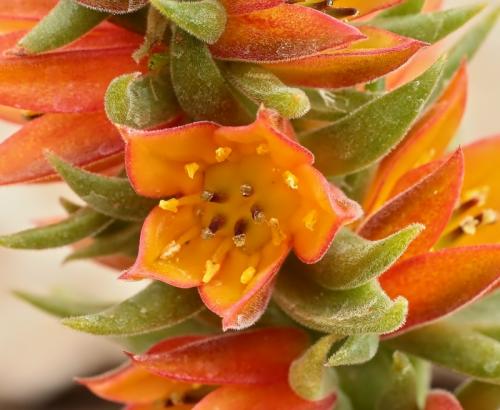
Photos Stefan Neuwirth
Echeveria coccinea 'Recurvata'
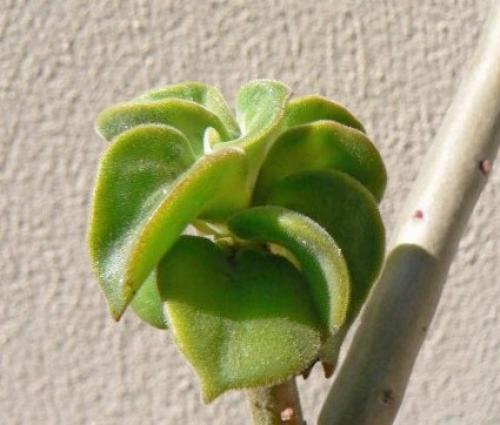
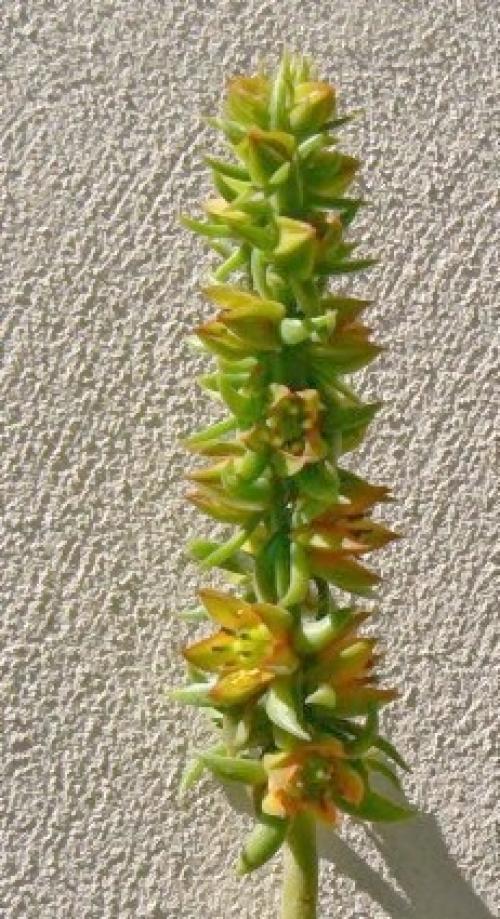
Photos Isabel Palomo
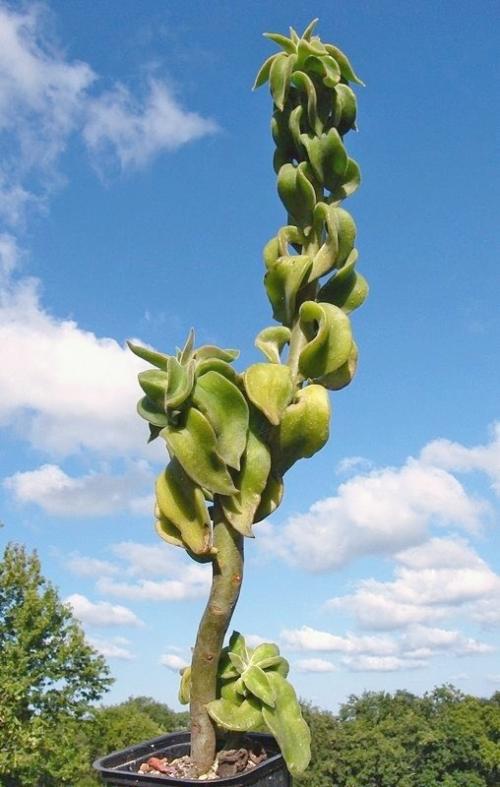
Photo Emmanuelle Aubé
A cristate form was published as Echeveria coccinea 'Furry Fan' by Harry Mak in Photo album of succulents in color 3: 105 (Mar 2003) :
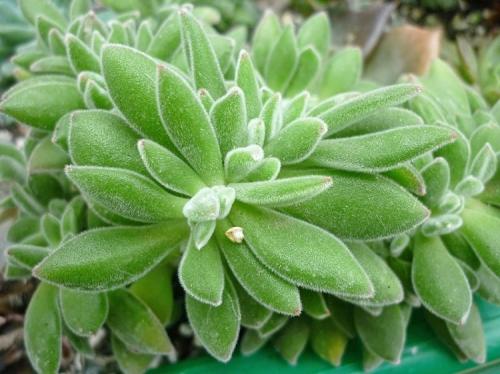
Photo Silvia Choquehuanca Vargas